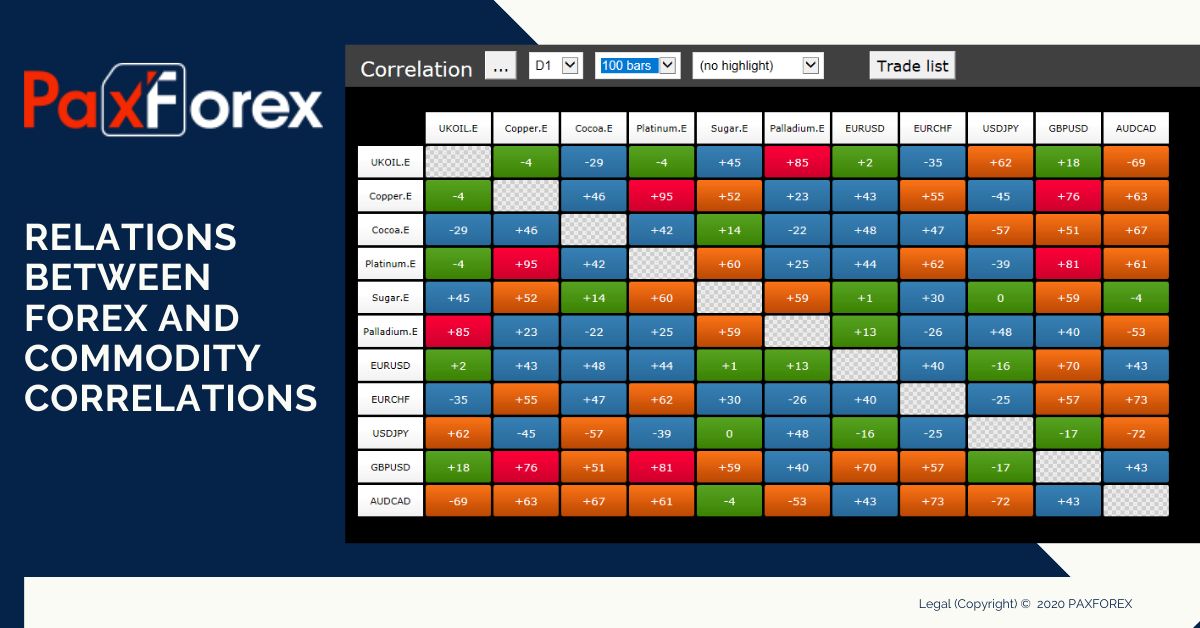
Correlations between the world's most heavily traded commodities and currency pairs are common. For example, the Canadian dollar (CAD) is correlated to oil prices due to exporting, while Japan is susceptible to oil prices because it imports most of its oil.
Similarly, Australia (AUD) and New Zealand (NZD) have a close relationship to gold prices and oil prices. While the correlations (positive or negative) can be significant, if Forex traders want to profit from them, it's important to time a "correlation trade" properly. There will be times when a relationship breaks down, and such times can be very costly for a trader who does not understand what is occurring.
Being aware of a correlation, monitoring it and timing it are crucial to successful trading based on the inter-market analysis provided by examining currency and commodity relationships.
Not all currency/commodity correlations are worth trading. Traders need to take into account commissions and spreads, additional fees, liquidity and also access to information. Currencies and commodities that are heavily traded will be easier to find information on, will have smaller spreads and liquidity that is more likely to be adequate.
Canada is a major exporter of oil, and thus its economy is affected by the price of oil and the amount it can export. Japan is a major importer of oil, and thus the price of oil and the amount it must import affects the Japanese economy. Because of the major effect oil has on Canada and Japan, the CAD/JPY positively correlates with oil prices.
This pair can be monitored as well as the USD/CAD. The downside is that the CAD/JPY generally has a higher spread and is less liquid than the USD/CAD. Since oil is priced in U.S. dollars throughout most of the world, the fluctuating dollar impacts oil prices (and vice versa). Therefore the USD/CAD can also be watched given that the two countries are major oil importers and exporters.
Australia is one of the major gold producers in the world. As a result, its economy is impacted by the price of gold and how much it can export. New Zealand is a major trading partner with Australia and is thus highly susceptible to fluctuations in Australia's economy. This means that New Zealand is also highly affected by Australia's relation to gold.
In 2008, Australia was the fourth-largest gold producer in the world. In 2009, the U.S. was the third-largest buyer of gold. Therefore, the AUD/USD and NZD/USD are suitable for trading in relation to gold prices.
Currency commodity relationships may change over time. Other currency commodity relationships can be found by looking for major producers of any export, as well as the major importers of the same commodity. The currency cross rate between the exporter and importer is worth looking at for a correlation with the commodity.
Upon knowing which currencies and commodities have strong relationships, traders need to decide which tradable currency pair they will make their trades in, or if they will trade in the commodity and currency. This will depend on several factors including fees and the trader's ability to access a given market. The charts show that the commodity is often the more volatile of the instruments.
If accessible, a trader may be able to trade the commodity and currency pair from one account due to the widespread use of commodity contracts for difference (CFDs).
Correlations between currencies and commodities are not an exact science. Often correlations break down and may even reverse for extended periods. Traders must remain vigilant in monitoring correlations for opportunities. Correlation indicators or monitoring charts are two ways of completing this task. After divergences, waiting for the commodity and currency to align in their respective trends can be a powerful signal - yet traders must accept that divergences can last a long time.
Relationships may change over time as countries alter exports or imports, and this will affect correlations. It is also important that traders determine how they will make trades, whether in the currency, the commodity or both.







